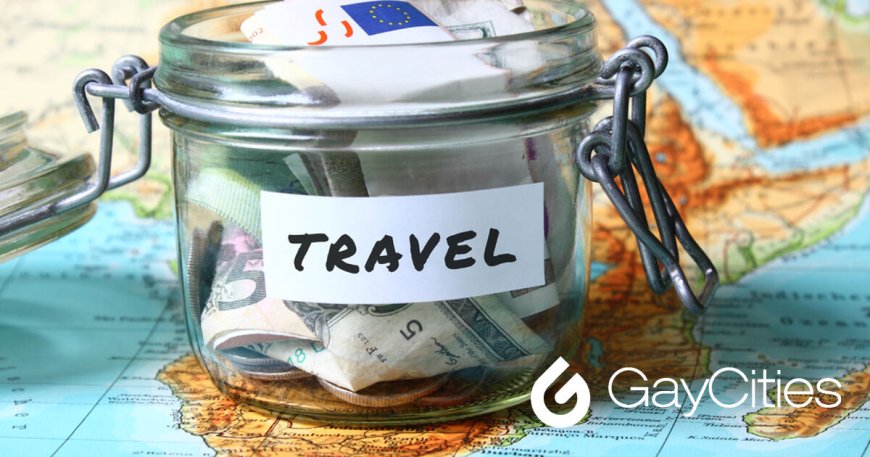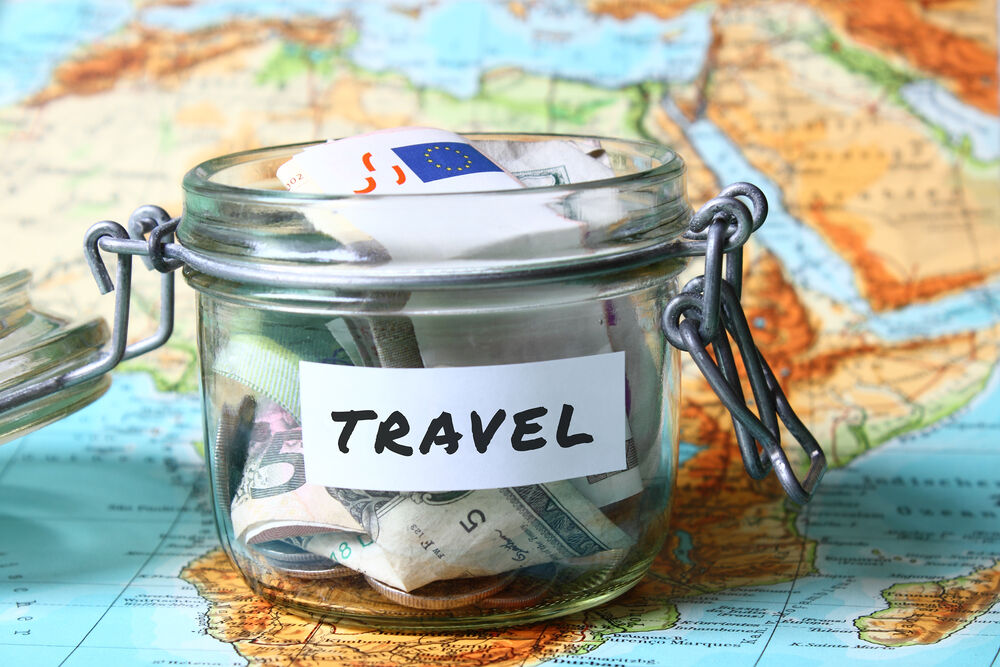How to save money when you travel to Europe
We've got tips to help you travel like a king while not breaking the bank.


How do you travel like a king without breaking the bank? We have six tips to help you get the most out of a vacation to LGBTQ+-friendly Europe on a tight budget.
Plenty of travelers try to get as much as possible out of a single trip, hopping between popular destinations like Paris, Rome, and London to try to fit in as much as they can before returning stateside.
However, the cost can add up quickly when factoring in flights, accommodation, local transport, meals, and local attractions.
Pack your bags, we’re going on an adventure
Subscribe to our weekly newsletter for the best LGBTQ+ travel guides, stories, and more.
Subscribe to our Newsletter today
Related
The top 50 most popular LGBTQ+ destinations in the world
Discover where the LGBTQ+ community is searching to travel next – from hidden gems to iconic hotspots.
Do Your Research
Start planning early.
Generally speaking, the earlier you can purchase your flight tickets and vacation packages or book a hotel, the cheaper the costs will be.
“Flights can be one of the biggest travel expenses, which is why you should be comparing multiple airlines and travel sites to get the best prices,” Olle Pettersson, personal finance expert at Finansplassen, told GayCities. “There may also be flights departing a day later or earlier than your first choice of date at lower costs.”
Does your credit card offer travel rewards? Can you spend those miles or points to get an even cheaper (or free!) flight? If your card partners with a hotel chain, you could also save money by booking with them. You’ll often get bonus miles that you can use toward your flight if you book the hotel first. Remember that you’ll normally need to travel on the dates you’ve booked your hotel, although some hotels will allow you to change the dates with minimal hassle and no fees if you find a cheaper flight within a few days of your reservation.
Tour companies and hotels will also offer special deals like Pride packages that could save extra money despite being closer to when you want to travel. See if that normally happens and weigh your chances of scoring savings by waiting a little longer.
Travel Offseason
Everyone wants to go to Europe in the summer. Christmas is also popular. So why not beat the crowd by going at another time of year?
Not only are the destinations less crowded, and there is less wait time to see attractions, but with rising temperatures worldwide, some places are much safer during cooler months.
Plus, with slower demand, you can frequently score much lower prices for accommodations and flights. If you’re going to an area with a strong tourism base, dining out and entertainment costs can also be lower as businesses compete harder for customers.
Brent Hartinger, a digital nomad with experience scoring the best deals as he and his husband, Michael, continuously travel worldwide, points out that “shoulder season” is the best time to travel. What is shoulder season? It’s “the time between the high and low seasons — usually spring or fall,” he says.
“The prices and crowds are lower, but the weather is often still perfect,” he added. “This time — September or June in many places — can be the absolute sweet spot of travel: most of the advantages of high and low season at the same time. Michael’s and my absolute favorite travel months are September and October, especially in Europe.”
Ditch the Car
Americans love their cars. Especially in less urban areas, it can be miles before we get to a grocery store or friend’s home. Uber or Lyft has become the default way of getting around in bigger cities.
Not only is that bad for the environment, but other ways of getting around are available—especially in larger cities. Many American cities are relatively modern, and streets have been designed to accommodate cars, but some of the most popular European cities predate the automobile and have smaller streets and denser neighborhoods. They’re not built to have scores of gas-guzzling, exhaust-spewing vehicles crowding the streets.
“In most places in America, not having access to a car is almost inconceivable. In most places in Europe, having a car is a luxury of the wealthier classes — and rarely needed anyway,” Hartinger says.
“Public transport is usually very efficient in European cities and is much cheaper mode of travel compared to taxis,” Pettersson points out. “You should also be walking about as much as possible to enjoy the European streets and save money along the way. Many major attractions end up being close together or can easily be found by just following the central walking routes through the main cities.”
And again, do your research ahead of time.
“Another potential money saver is looking into all-inclusive city passes intended for tourists at your destination. Many of them include free attractions and limited use of the public transit system or can provide discounts for selected activities and/or restaurants.”
Eat Like a Local
Since Hartinger and his husband generally stay longer than a couple of weeks, they use the opportunity to buy groceries and prepare their own food. If you’re renting an Airbnb, that’s a feasible and much more affordable option.
“We try to shop at local farmers’ markets — actual farmers’ markets, not the cater-to-the-rich or tourist-y American ones. We also try to buy mostly in-season food, which is also cheaper,” he says.
Pettersson concurs.
Related
Know your rights: How to claim travel compensation for delayed or canceled flights
It’s important to know your rights as a traveler and ensure you get everything you are entitled to if something goes wrong.
“Cooking your own meals is always going to be cheaper than visiting restaurants and cafes all the time, which can be especially cost-effective for long stays,” he said.
But what if you’re not there for more than a few days or are staying in a hotel room?
“Grocery stores are abundant in Europe and offer many different options that are perfect for tourists, including pre-made sandwiches and meal deals.”
See Something Else
“Every city has its main draws for tourists, but these areas can be very expensive as a result,” Pettersson shares. “You should look for attractions that are safely within your budget or maybe even free to visit, like public gardens or historic landmarks, that can be just as satisfying.
“There are many sources of information for these sorts of activities, including searching online each day or checking travel guides. Similarly, you can ask the locals what they would recommend seeing to discover some locations that otherwise might be missed.”
Do you need to pay to climb up to the top of the Eiffel Tower, or would looking at it from the banks of the Seine be just as satisfying? If seeing the city rooftops is your goal, the locals can tell you that Sacré-Cœur, a famous basilica located at the summit of the butte of Montmartre, overlooks the entire city and its suburbs. It is the second most popular tourist destination after the Eiffel Tower – and the view is free.
No matter what city you visit, shop around for tour guides. Hundreds of companies are eager to take your dollars, and even more private guides would be happy to show you the sights. The prices can range dramatically. Choosing a personal guide at the destination keeps the money in the local economy, if frequently cheaper, and there’s a good chance the person who lives there knows more about the area.
Related
Paris uncovered: Must-see LGBTQ+ attractions and activities during the Olympics
If you’re in the City of Love for these magnificent displays of physical prowess, here are a few spots that should not be missed.
Your European Adventure Awaits
Traveling through Europe doesn’t have to drain your bank account. With a bit of planning and smart choices, you can enjoy a luxurious trip without the hefty price tag. Let’s recap the key strategies to help you make the most of your European getaway:
- Do your research: Plan early and compare multiple airlines and travel sites to get the best flight and hotel deals. Utilize travel rewards from your credit card for additional savings.
- Travel offseason: Avoid peak travel times like summer and Christmas. Instead, opt for the “shoulder season” in spring or fall for lower prices and fewer crowds.
- Ditch the car: Embrace public transport and walking in European cities. Look into all-inclusive city passes for free or discounted attractions and transit.
- Eat like a local: Buy groceries and cook your meals if possible. Visit local farmers’ markets and grocery stores for affordable and fresh options.
- See something else: Explore less touristy attractions and ask locals for recommendations. Look for free or low-cost activities that can be just as enjoyable as the main tourist spots.
With these tips, you can travel smart, save money, and have an unforgettable European adventure.
Don’t forget to subscribe to the GayCities newsletter for all the latest updates on LGBTQ+ events, travel tips, and more!

 Mark
Mark 





